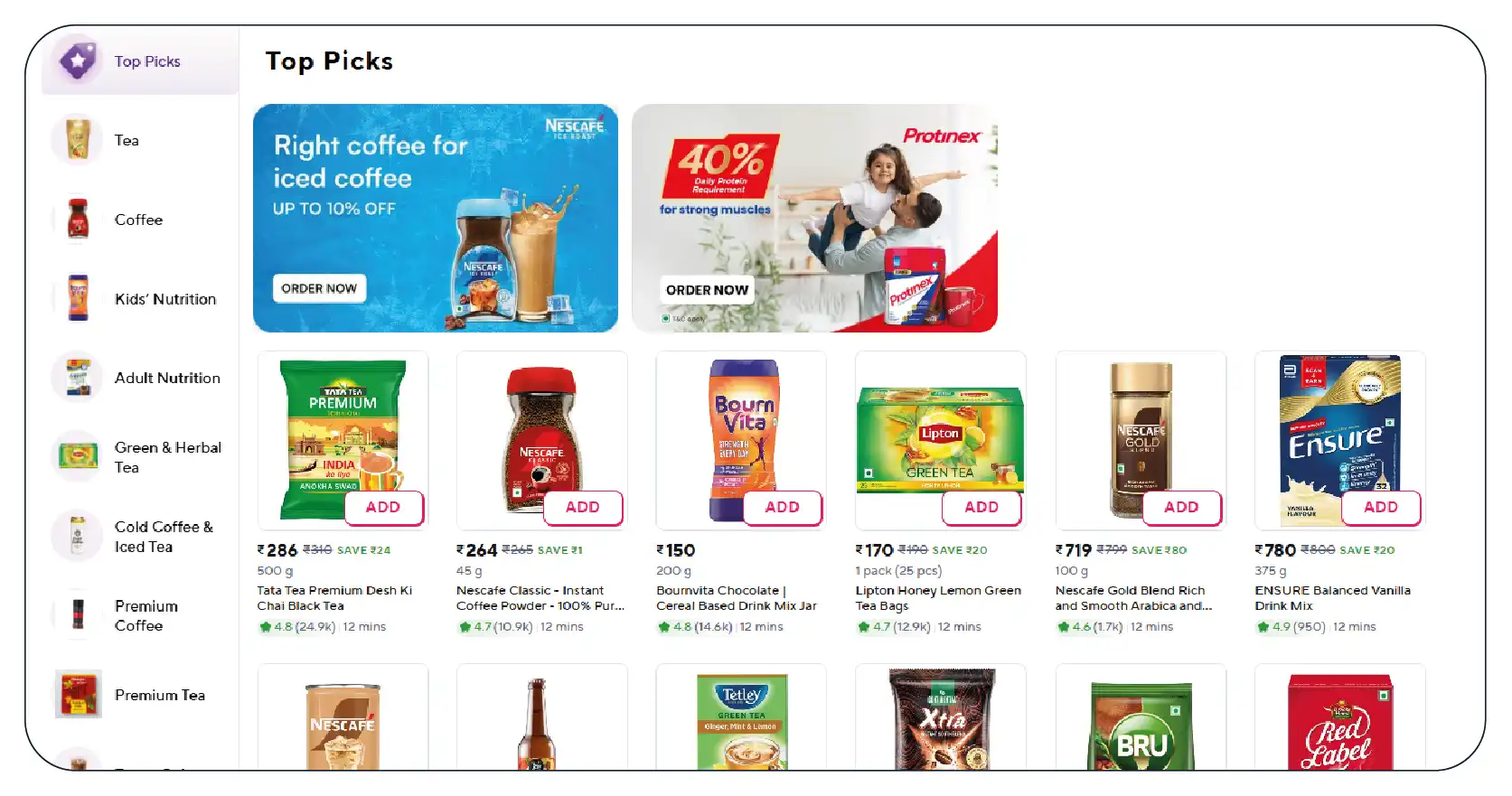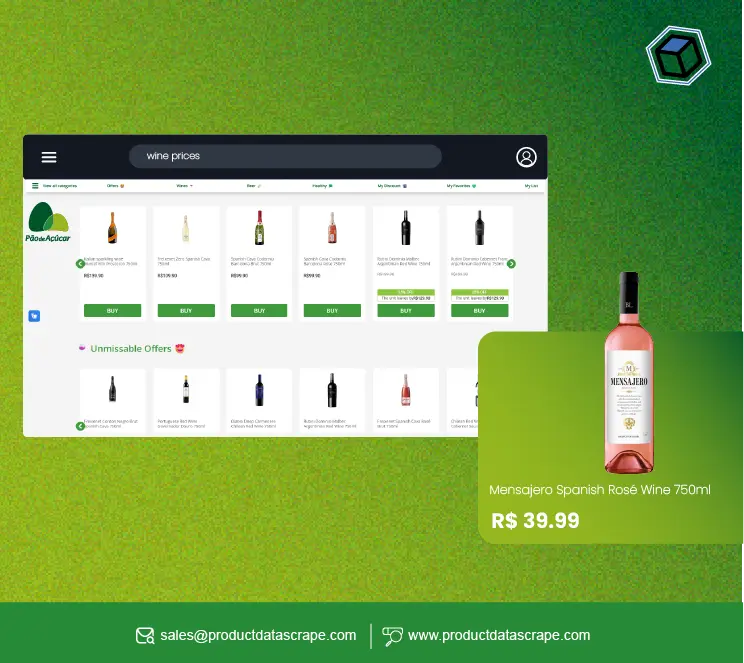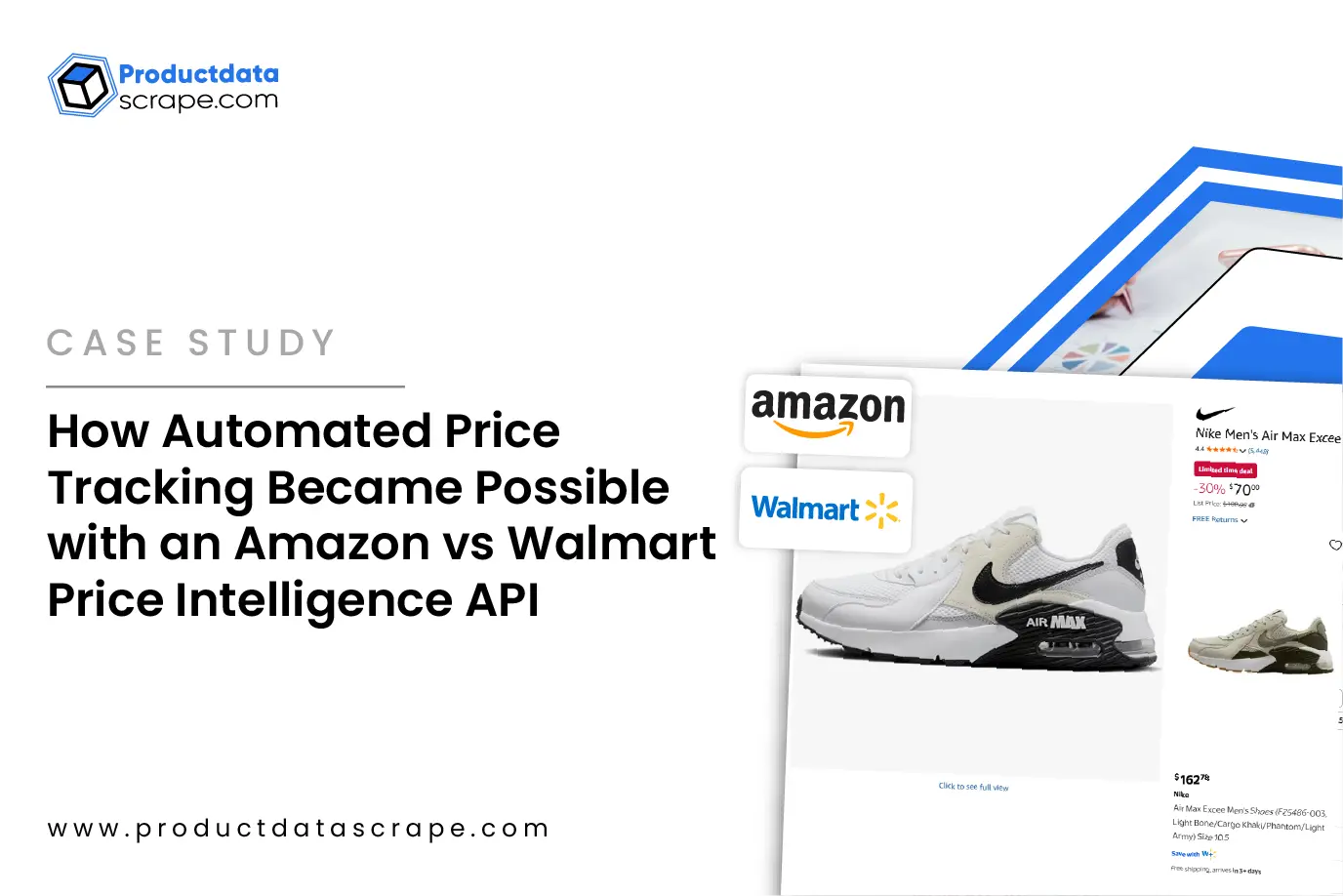Introduction
In the rapidly growing quick commerce grocery sector, data-driven decisions are
critical for success. Businesses need accurate insights on pricing, stock levels, and competitor
strategies to stay competitive in hyperlocal markets. By leveraging Scrape Hyperlocal Quick
Commerce Grocery Data, companies can analyze millions of SKUs, track daily price fluctuations,
and monitor stock availability across neighborhoods.
With the rise of 10-minute delivery apps and hyperlocal grocery platforms,
understanding consumer behavior and competitor pricing has become more complex. Scrape Local
Quick Commerce Grocery Listings and Extract Hyperlocal Grocery SKUs Data allow retailers to
access structured datasets that support smart pricing, inventory planning, and promotional
strategies. By utilizing a Hyperlocal Grocery Product Dataset, businesses can implement
real-time insights into their operations, optimize inventory management, and respond quickly to
market trends. This approach ensures data accuracy and empowers retailers to make informed,
timely decisions that drive revenue growth.
The Client
The client is a leading hyperlocal grocery retailer operating across multiple
Indian cities. With rapid growth in quick commerce, they faced the challenge of maintaining
optimal stock levels, pricing competitiveness, and customer satisfaction. They required
accurate, real-time insights from 10-minute delivery apps, neighborhood grocery stores, and
hyperlocal marketplaces to make informed decisions.
They sought a solution that could Scrape Hyperlocal Quick Commerce Grocery Data
efficiently and reliably. The client also needed tools to Scrape Daily Grocery Stock And Price
Data and access a Hyperlocal Retail Price Intelligence framework to monitor competitor pricing
and promotional activity. Their primary goal was to leverage Quick Commerce Grocery & FMCG Data
Scraping to improve inventory management, implement dynamic pricing strategies, and gain a
measurable competitive advantage in fast-moving urban grocery markets.
Key Challenges

The hyperlocal grocery sector presents several challenges for data collection and analysis.
First, product availability changes rapidly, with stock replenished multiple times daily.
Monitoring thousands of SKUs across multiple apps and stores manually was impossible. Second,
competitor pricing is highly dynamic, requiring continuous tracking to ensure competitive
positioning. Third, product listings vary across platforms in terms of naming conventions,
categories, and units, making data standardization critical.
Additionally, the client wanted real-time insights from hyperlocal 10-minute delivery apps,
which often impose restrictions on automated data extraction. Ensuring high data accuracy and
reliability was vital, as any discrepancy could affect pricing, stock decisions, and promotional
strategies. They also needed integration-ready datasets to support predictive analytics and
strategic planning.
The combination of high-volume SKUs, dynamic pricing, and multi-platform data sources made it
necessary to implement an automated, scalable solution. The client required a system that could
Scrape Hyperlocal Quick Commerce Grocery Data, track daily stock, and provide Hyperlocal Grocery
Product Dataset with actionable insights for immediate operational improvements.
Key Solutions

To address the client’s challenges, we implemented a comprehensive Scrape Hyperlocal Quick Commerce Grocery Data solution that combined advanced scraping technologies with real-time analytics. Our platform was designed to Scrape Quick Commerce Data from 10-Minute Delivery Apps , ensuring accurate extraction of daily stock, pricing, and product details across multiple hyperlocal grocery platforms.
We also implemented Extract Hyperlocal Competitor Pricing Data modules to monitor competitor SKUs and promotional activity continuously. By leveraging a Grocery store dataset , the client could standardize product attributes across platforms and categorize SKUs consistently for analysis. Our system utilized robust APIs and monitoring scripts, including Top Grocery Price Monitoring APIs, to maintain real-time updates with 95% accuracy.
Additionally, the extracted Hyperlocal Grocery Product Dataset provided actionable insights for dynamic pricing, stock replenishment, and promotional strategy planning. Daily reporting dashboards and automated alerts enabled the client to make informed decisions rapidly. Integration with predictive analytics tools allowed the client to forecast demand, adjust inventory proactively, and respond to competitor pricing moves instantly. This end-to-end solution empowered the client to maintain operational efficiency, maximize revenue, and enhance customer satisfaction in the highly competitive hyperlocal grocery market.
Client’s Testimonial
"Working with Product Data Scrape transformed our approach to hyperlocal grocery operations. The ability to Scrape Hyperlocal Quick Commerce Grocery Data with high accuracy gave us insights we never had before. Tracking competitor pricing and stock levels across multiple apps helped optimize our inventory and pricing strategies. The Hyperlocal Grocery Product Dataset and real-time dashboards allowed our team to make faster, data-driven decisions. Since implementing this solution, we’ve seen improved operational efficiency, reduced stockouts, and higher revenue growth. The team’s expertise in quick commerce data scraping was instrumental to our success."
—Head of Data Analytics
Conclusion
The hyperlocal quick commerce grocery market demands real-time insights for competitive success. By using Scrape Hyperlocal Quick Commerce Grocery Data, the client gained a 95% accurate view of stock availability, pricing trends, and competitor strategies. The solution enabled Scrape Local Quick Commerce Grocery Listings, extraction of Hyperlocal Grocery SKUs Data, and access to a comprehensive Hyperlocal Grocery Product Dataset.
With automated Scrape Daily Grocery Stock And Price Data and real-time Hyperlocal Retail Price Intelligence, the client could respond quickly to market changes, implement dynamic pricing, and optimize inventory across urban regions. Leveraging Quick Commerce Grocery & FMCG Data Scraping , Top Grocery Price Monitoring APIs , and competitor insights allowed them to maximize revenue and enhance operational efficiency.



















.webp)
.webp)

.webp)